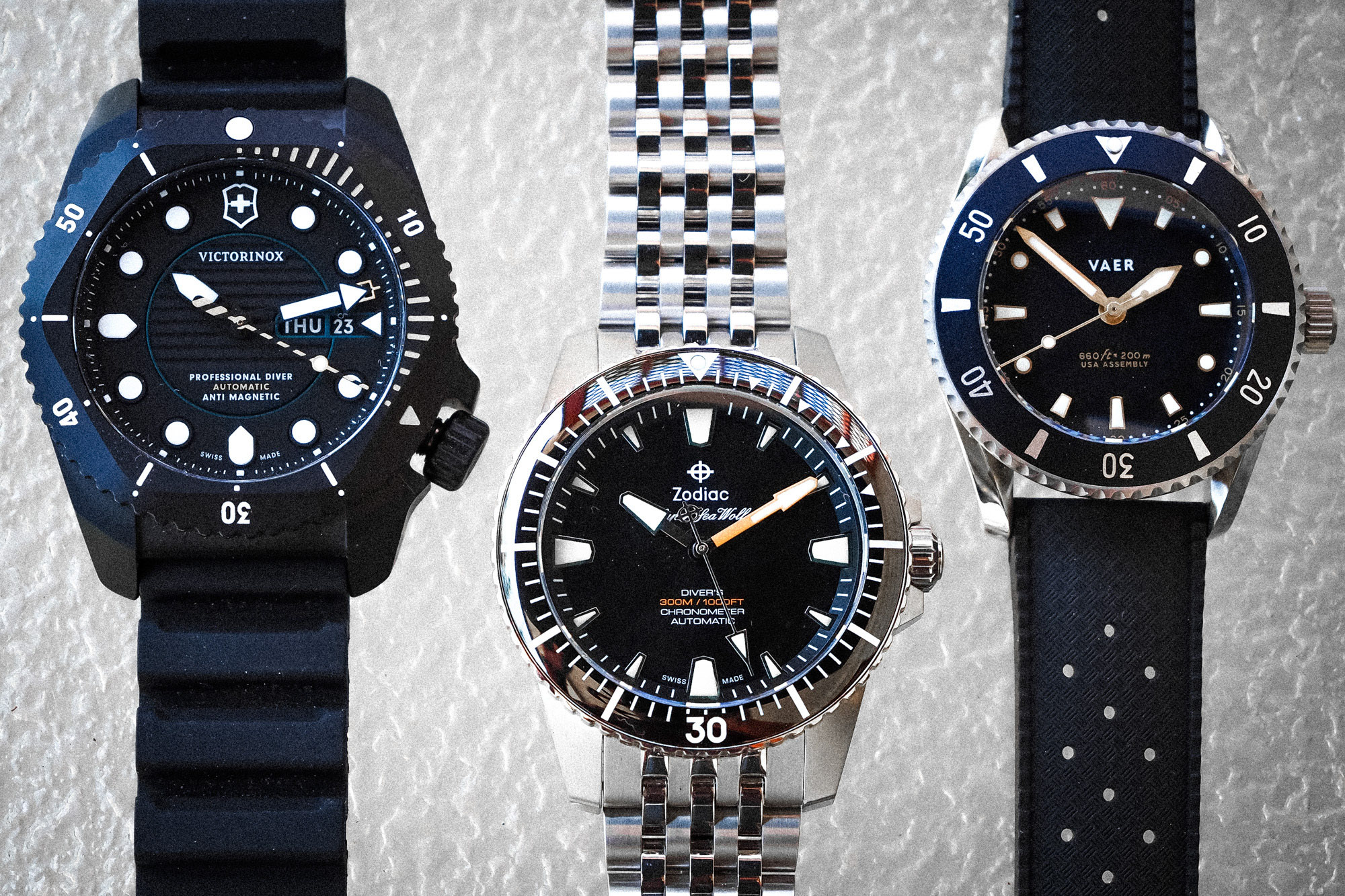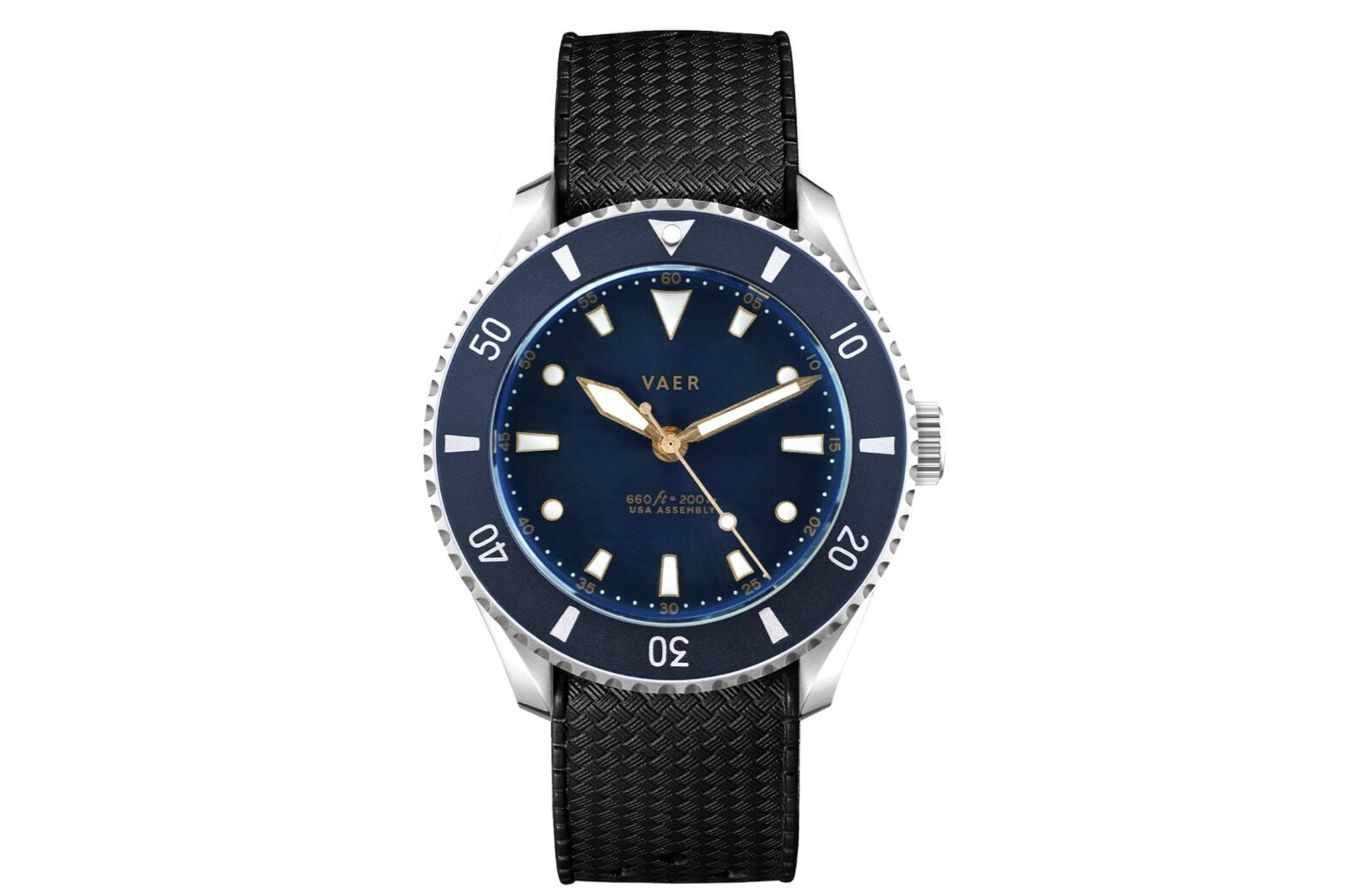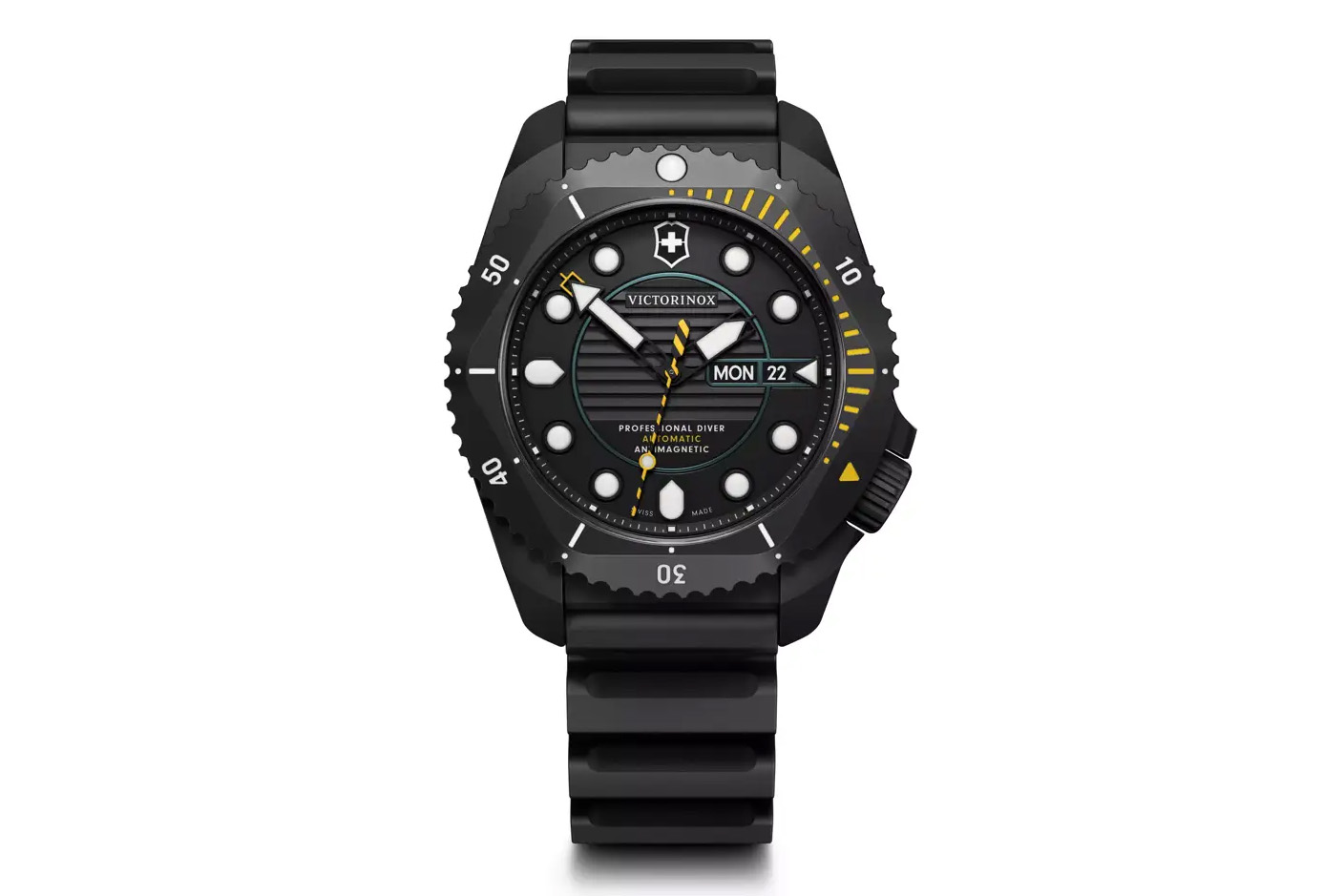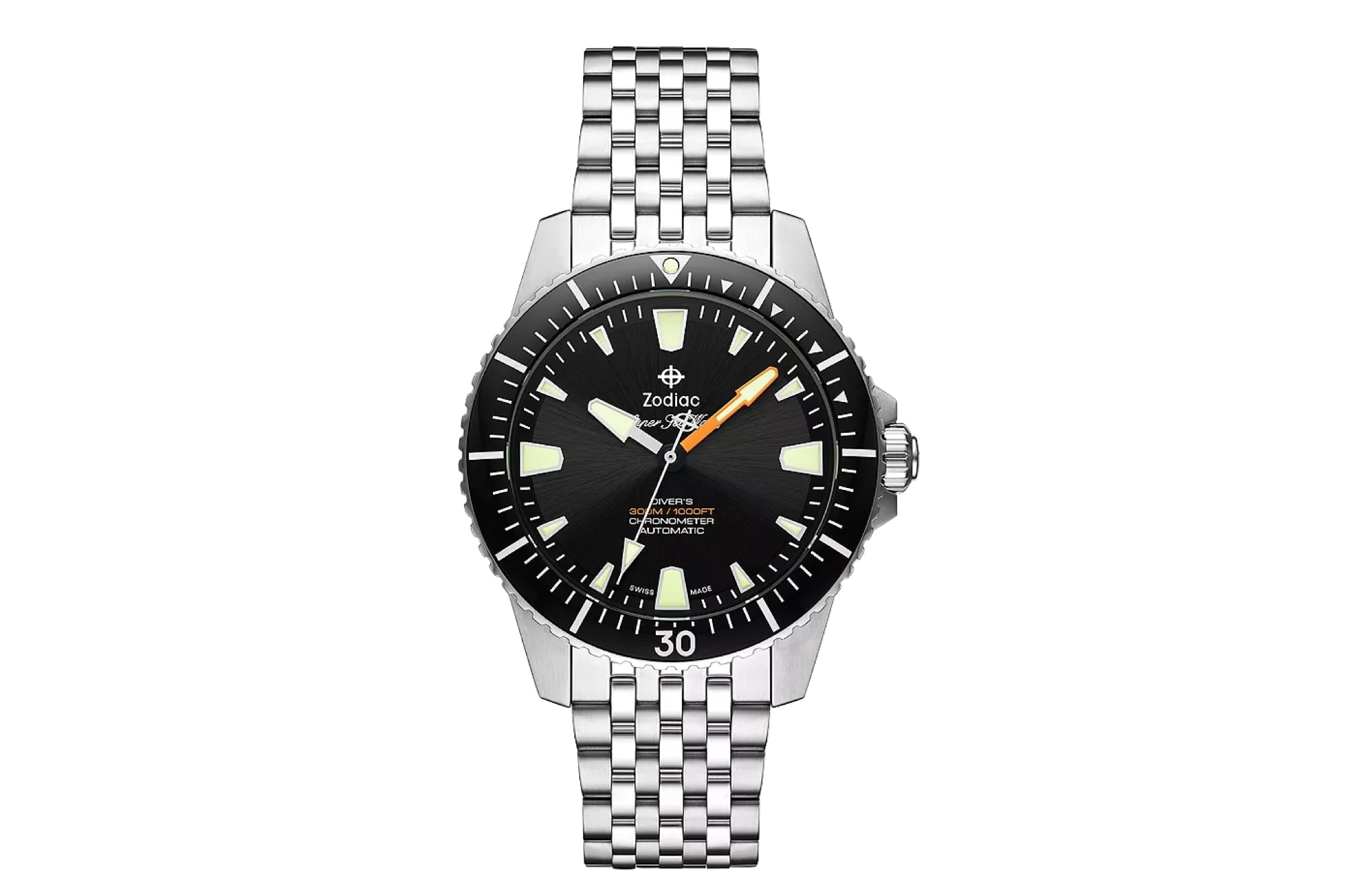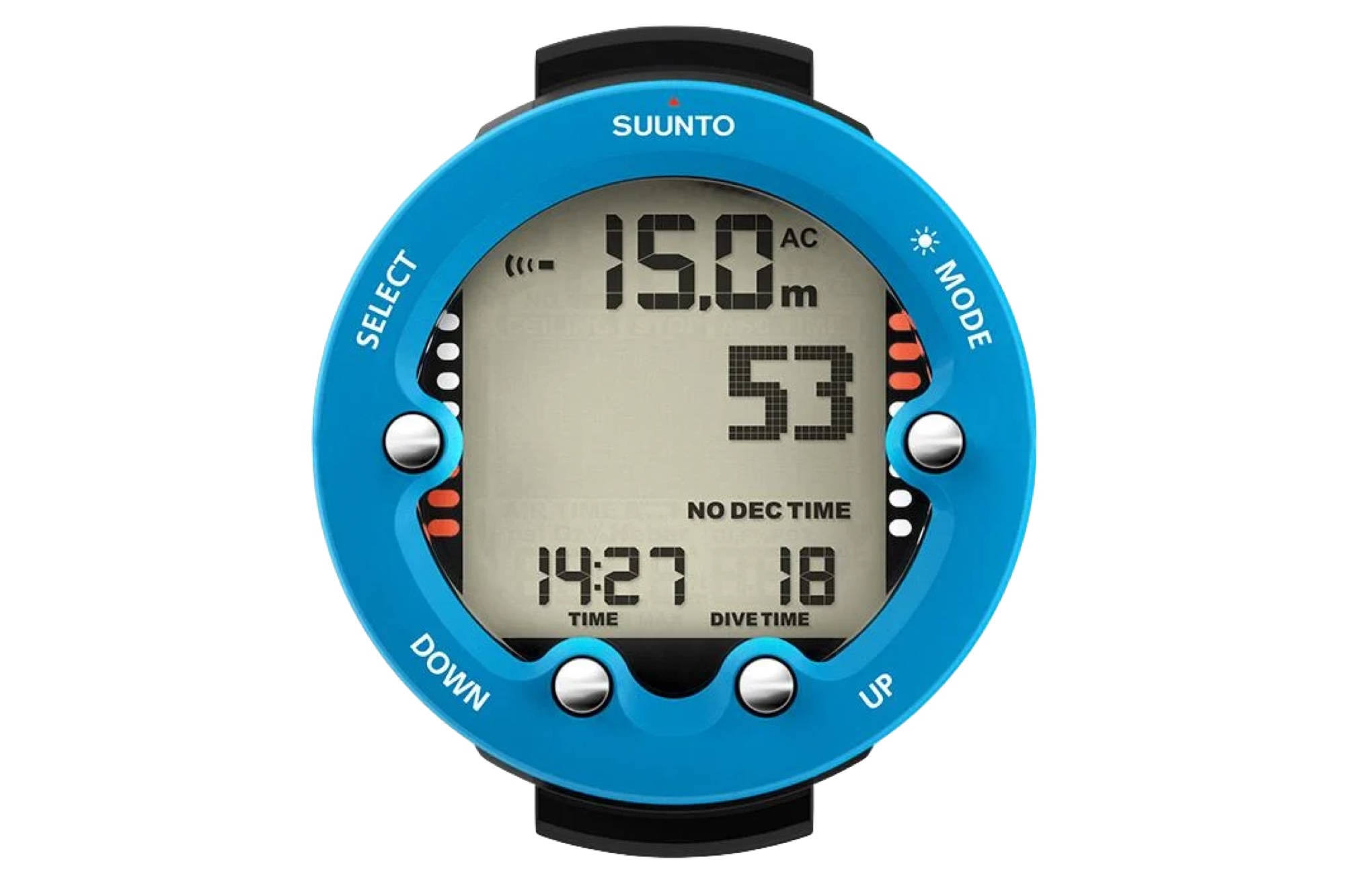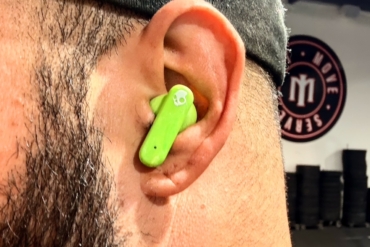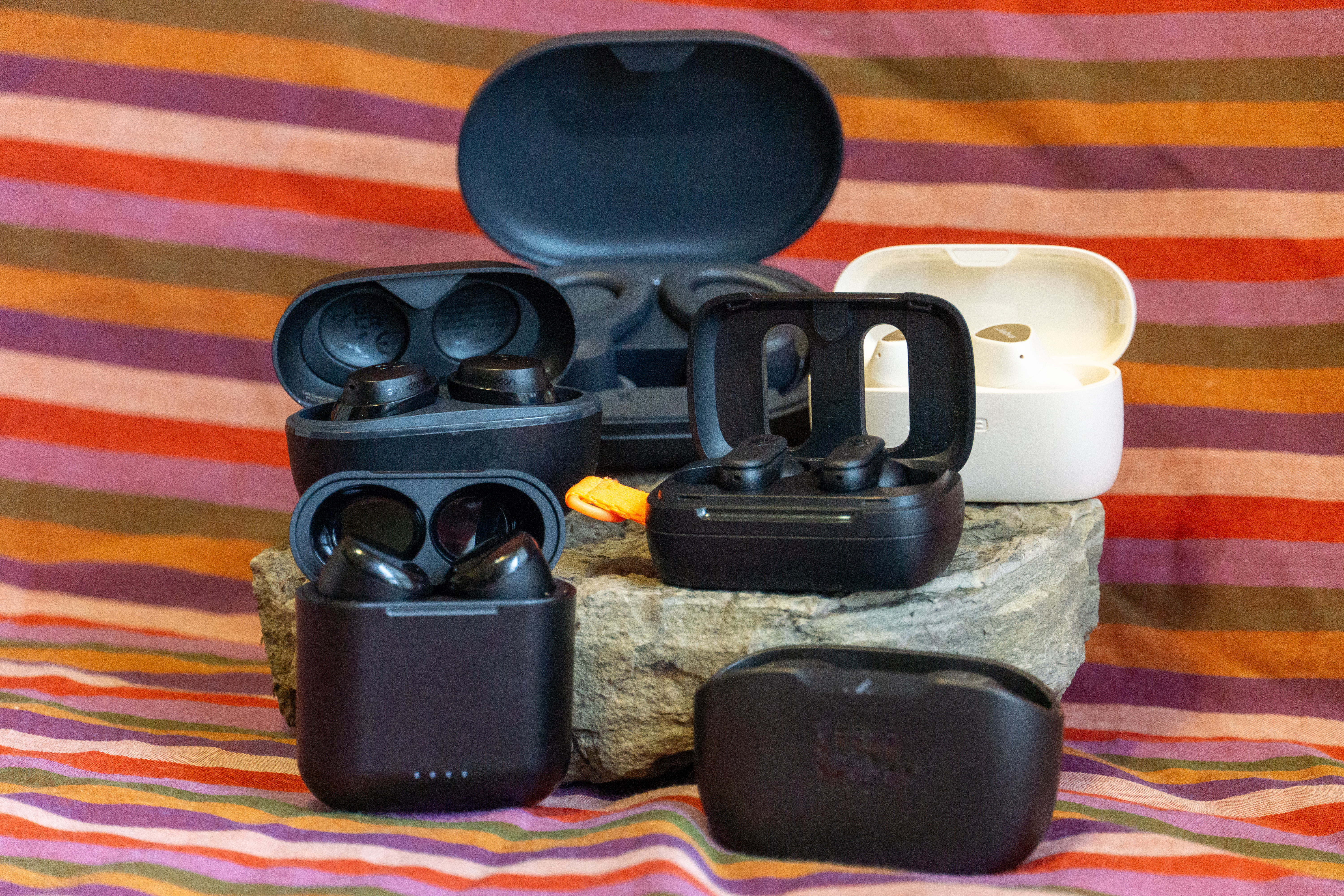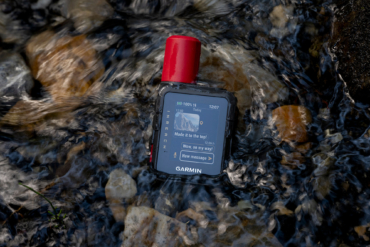Whether $50 or $100,000, the best dive watches must be waterproof, tell time accurately, and be easy to read above or below the waves.
Whether you’re after a reliable and wallet-friendly option like the Casio MDV106-1A Duro or something with a bit more cachet like the Reef Chronometer, there’s something for everyone here.
As watch aficionados, we’ve spent much time researching and wearing dive watches. Our head watch tester, Sean McCoy, also spent a decade in the Caribbean, where he dove regularly and had dozens of divemaster friends. We’ve brought all this research, time, and experience together here to give you the best watch-buying guide.
McCoy also spoke with a few divemasters and ocean researchers to bring broad opinions. Because if you’re on GearJunkie, you probably want your dive watch to be capable of going deep, even if only on occasion. We even include a couple of dive computers for actual divers.
So, if you’re shopping for a dive watch, check out the recommendations below. These automatic, quartz, and digital watches look good and can withstand the pressure of saltwater, sun, and sand.
Editor’s Note: We greatly updated our Dive Watch guide on November 5, 2024, to add a new Price & Value section — an essential consideration when comparing watches that can run you north of a grand.
The Best Dive Watches of 2025
Best Dive Watches for Daily Wear
If you’re like most dive watch wearers, you want an accurate, handsome watch that can get wet. Sure, you may take it diving a couple of times a year on vacation. And you’ll likely wear it during some rugged uses. My watches regularly go to the archery range, do chores outside, and much more.
So, feel no shame in enjoying the beauty, history, and capability of a high-quality dive watch, even if it never gets past the beach.
Casio MDV106-1A Duro
- Reference number: MDV106-1A
- Case size: 44 mm
- Lug size: 20 mm
- Case material: Stainless steel
- Movement: Casio Module 2784 battery-powered quartz
- Strap color: Black
- Water resistance: 200 m
Pros
- Rugged case and strap
- Reliable timekeeping
- Low-cost
- Date window
Cons
- Basic rubber strap
- Poor lume
- Mineral watch face
Formex Reef Chronometer
- Reference Number: 2200.1.6333.100
- Case Size: 42 mm
- Lug Size: 22 mm
- Case Material: Stainless steel
- Movement: COS-C certified Sellita SW300-1
- Strap Color: Stainless steel (others available)
- Water Resistance: 30 bar (300 meters/1,000 feet)
Pros
- Luxury quality
- Versatile strap with micro-adjustability
- COSC certified watch movement
- Sapphire crystal
Cons
- Expensive
- Low contrast markings on bezel
Vaer D4 Meridian Solar
- Reference Number: D4-MN38
- Case Size: 38 and 42 mm
- Lug Size: 20 mm
- Movement: Solar-powered Epson VS-22/42 quartz
- Case Material: 316L stainless steel
- Strap Color: Black, stainless, others
- Water Resistance: 660 feet / 200 meters
Pros
- Durable
- Good lume
- Excellent customer service
- Good price to quality ratio
Cons
- Modest watch
- No hashmarks on bezel
Squale 500M Automatic Dive Watch
- Reference Number: 1521
- Case Size: 42 mm
- Lug Size: 20 mm
- Case Material: Stainless steel
- Movement: Selita SW-200-1
- Strap Color: Leather (stainless and rubber available)
- Water Resistance: 500 meters
Pros
- Rich history
- Iconic look
- Military pedigree
Cons
- Leather strap on the base model
- High price for a lesser-known brand
Island Watch ISL-88 Islander
- Reference Number: ISL-88
- Case Size: 42 mm
- Lug Size: 22 mm
- Case Material: Stainless steel
- Movement: NH35 automatic
- Strap Color: Stainless
- Water Resistance: 200 meters
Pros
- Incredible value at $400
- Wide range of designs
- Screw-links on bracelet allows for home adjustment
- SuperLuminova is bright and easy to read
Cons
- Some designs are more original than others
Citizen Promaster
- Reference Number: BN0156-13Z
- Case Size: 36.5 mm
- Lug Size: 18 mm
- Case Material: Stainless steel
- Movement: E168 Eco-Drive
- Strap Color: Black, blue
- Water Resistance: 200 meters
Pros
- Solar power
- Great lume
- Classic design
Cons
- Unattractive strap
Victorinox Dive Pro Automatic
- Reference Number: 241997
- Case Size: 43 mm
- Lug Size: 21 mm
- Case Material: PVD titanium
- Movement: Sellita SW220-1
- Strap Color: Black
- Water Resistance: ISO 6425 certification, 300 m
Pros
- ISO 6425 certification
- Excellent readability
- Light for size due to titanium
- Anti-magnetic
Cons
- 38-hour power reserve
- Tactical appearance not for everyone
Orient Mako II Automatic Dive Watch
- Reference Number: FAA02002D9
- Case Size: 41.5 mm
- Lug Size: 22 mm
- Case Material: Stainless steel
- Movement: Orient 22-Jewel Cal. F6922 automatic
- Strap Color: Stainless steel
- Water Resistance: 200 meters
Pros
- Sharp looks
- Reasonable accuracy
- Comfortable bracelet
- Budget pricing
Cons
- Scratch-prone mineral crystal
- Not the fanciest case and strap
Zodiac Super Sea Wolf Pro Diver
- Reference Number: ZO3552
- Case Size: 42 mm
- Lug Size: 20 mm
- Movement: Sellita SW200-1
- Case Material: Stainless steel
- Strap Color: Stainless steel
- Water Resistance: ISO 6425 certified 990 ft. / 300 m
Pros
- Storied history
- Good readability and lume
- COS-C certified dive watch
- Impressive value for the money
Cons
- Expensive
- 38-hour power reserve won't quite get through weekend
Watches for Scuba: Dive Computers
This isn’t a complete roundup of dive computers. But for those who are shopping for watches to actually go diving, these are the top choices. To pick them, we spoke with Kristan Gustavson, a Master of Marine Biodiversity and Conservation from the Scripps Institution of Oceanography, and Marques Hall, a 100-ton boat captain and divemaster.
Garmin Descent Mk3i
- Reference Number: 010-02753-13
- Case Size: 43 or 51 mm
- Lug Size: 20 mm
- Movement: N/A
- Case Material: Titanium
- Strap Color: Black or gray
- Water Resistance: 200 m
- Dive Features: Single and multi gas; gauge, apnea modes; nitrox and trimix support; dive planner; safety and deep stops; much more
Pros
- Do-it-all dive watch
- Functions as all-around sports watch
- Good appearance for daily wear
- Complete solution for navigation, training, and dive planning
Cons
- Can be complicated
- Lots to learn, requires significant inputs to use correctly
- Expensive
Suunto Zoop Novo
- Reference Number: N/A
- Case Size: 66 mm
- Lug Size: N/A
- Movement: N/A
- Case Material: Composite
- Strap Color: Blue, lime green, black
- Water Resistance: 80 m
- Dive Features: Air, nitrox, gauge, free and off; full continuous decompression algorithm; built-in dive planner; detailed graphical logs and dive data; apnea timer for freediving; timer in air/nitrox modes
Pros
- Simple and intuitive to use
- Few buttons to push
- Reliable
- Affordable price for a dive watch
Cons
- No built-in navigation
- No Bluetooth connectivity

Dive Watches Comparison Chart
| Dive Watches | Price | Case Size | Lug Size | Movement | Water Resistance |
|---|---|---|---|---|---|
| Casio MDV106-1A “Duro” | $50 | 44 mm | 20 mm | Casio Module 2784 battery-powered quartz | 200 meters |
| Formex Reef Chronometer | $1,960 | 42 mm | 22 mm | COS-C certified Sellita SW300-1 | 300 meters |
| Vaer D4 Meridian Solar | $279 | 38/42 mm | 20 mm | Solar-powered Epson VS-22/42 quartz | 200 meters |
| Squale 500M Automatic | $1,095 | 42 mm | 20 mm | Selita SW-200-1 | 500 meters |
| Island Watch ISL-88 Islander | $399 | 42 mm | 22 mm | NH35 automatic | 200 meters |
| Citizen Promaster | $375 | 36.5 mm | 18 mm | E168 Eco-Drive | 200 meters |
| Victorinox Dive Pro Automatic | $1,200 | 43 mm | 21 mm | Sellita SW220-1 | 300 meters |
| Orient Mako II Automatic Dive Watch | $300 | 41.5 mm | 22 mm | Orient 22-Jewel Cal. F6922 automatic | 200 meters |
| Zodiac Super Sea Wolf Pro Diver | $2,195 | 42 mm | 20 mm | Sellita SW200-1 | 300 meters |
| Garmin Descent Mk3i | $1,400 | 43/51 mm | 20 mm | N/A | 200 meters |
| Suunto Zoop Novo | $300 | 66 mm | N/A | N/A | 80 meters |
How We Tested the Best Dive Watches

Our Testing Process and Testing Grounds
Because dive watches are extremely varied, we broke this guide into two sections. First, there are a couple of watches focused on actually diving. These are technically dive computers, which aid in bottom-time calculations. For most scuba divers, these are the way to go, eliminating time-consuming calculations with dive tables.
The next section covers traditional analog dive watches. While these are capable tools for scuba diving, most analog (or digital display non-computers) spend their lives on dry land. These vary from inexpensive quartz watches that can withstand significant water pressure to luxury watches renowned for their appearance as much as their performance underwater.
While dive watch prices can easily vault into the stratosphere, we’re GearJunkie, a site that focuses on gear that you can actually use in the outdoors. And that means not bankrupting your family if you break a watch. So, we kept the prices here under the $2,500 mark.
If you want a Rolex, Omega, or Tudor, well, you already know it’s the name you’re after. This guide focuses on function and also fashion, but not brand-name prestige. So whether you’re excited to dive safely or just want to know what time it is in style, this guide should have you covered.
Once we settled upon of testing slate, we used these watches as our daily drivers to get the full experience and understand where they excelled and where they faltered. As mentioned previously, most dive watches will never see the depths, so our testing leaned more on observing casual functionality, durability, and feature-richness. From the jetway to the grocery store, these watches got the full treatment and earned their place in our lineup.
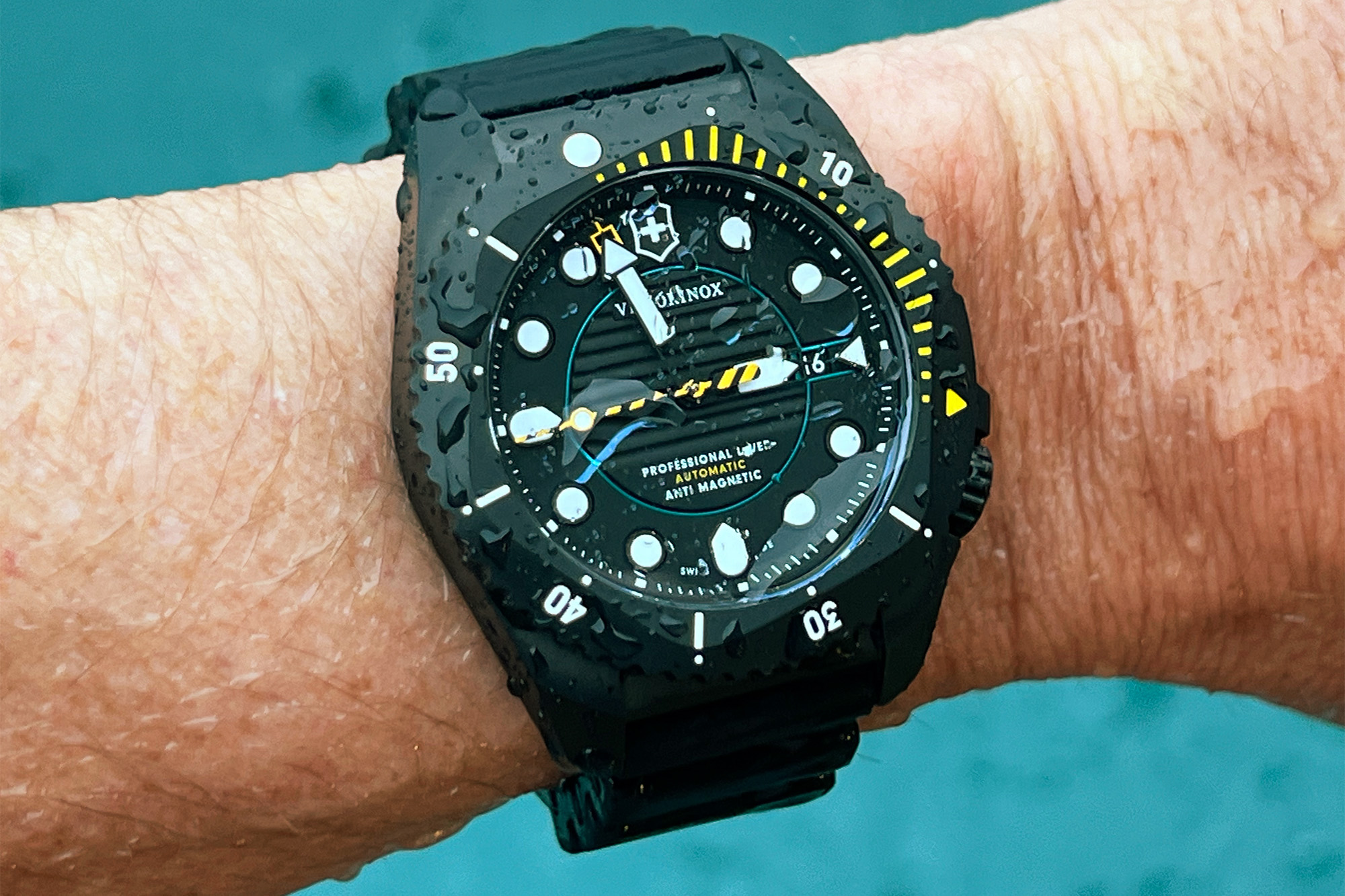
Our Expert Testers
This guide is brought to you by two of GearJunkie’s top watch enthusiasts, Josh Wussow and Sean McCoy. Wussow is a freelance writer for GearJunkie and an avid outdoorsman and contractor. McCoy is the Editorial Director for AllGear Digital, GearJunkie’s parent company. He is also the former editor-in-chief of GearJunkie. He is an avid outdoorsman and PADI-certified open-water diver who lived in the Caribbean for 10 years, where he dove regularly.
McCoy is also a total watch nerd and enjoys the horological elements that make fine watches tick. While his passion for watches and timepieces is rather new (he’s been writing about watches for less than two years), he has a deep understanding of gear and outdoor sports developed over 10 years of writing at GearJunkie.com. He has published more than 2,500 articles on the outdoors.
Our goal for this article is to provide the most useful advice for those looking to buy a dive watch. Here, we share the same advice we would offer our friends and family. If you have any feedback, please don’t hesitate to reach out. We’ll be updating this article regularly to offer the best, up-to-date advice for dive watch shopping.
Buyer’s Guide: How to Choose the Best Dive Watch
Movement
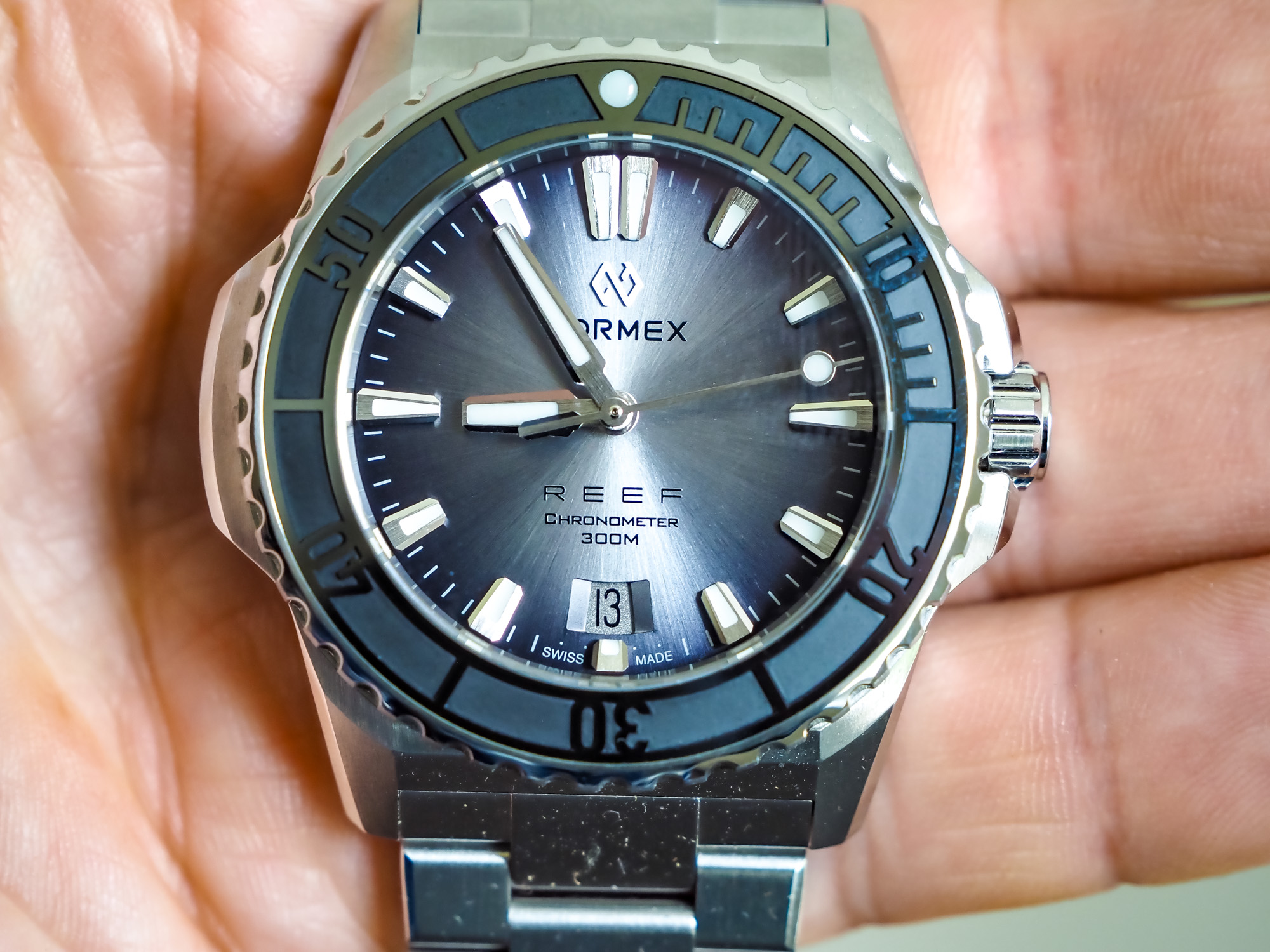
If you’re in the market for your first diver’s watch, there’s no more important factor than your choice of movement. It will deeply affect your relationship with the piece from both a timekeeping and power perspective. Let’s cover the three basic options.
We’ll start at the top with the automatics. By “top,” we’re referring to the most expensive option. Automatic watches are mechanically operated, keeping time through a series of tiny springs and gears working their magic while strapped to your wrist. Their ticks and spins produce the smooth, lovely sweep of the second hand instead of the more common second-to-second lurch of quartz.
But what the heck is “automatic” supposed to mean? In this case, the term refers to a mechanical movement that’s been fitted with a small inner counterweight and rotor. This piece swings around when you move your arm about, winding the watch’s spring and providing power.
Reserves vary, but you’ll usually be getting around 2 days of timekeeping from a fully torsioned spring. These can also be hand-wound using the crown, but so long as you’re wearing the watch for several hours a day, the mechanism can run almost indefinitely.
Now, the downsides. Because of their inherent complexity, automatic watches are less accurate than their electrically operated kin. Unless you plan on spending thousands of dollars, you’re going to be hoping for a piece that gains or loses less than 8 seconds a day.

Some poorly tuned models can be off by as much as half a minute, making precise timekeeping difficult. That’s why it’s important to find a movement that allows the gears to “hack.”
This means when you pull the crown all the way to the setting position, the second hand stops in its tracks. Some of the more iconic dive watches (like the Seiko SKX mentioned above) lack this important feature.
One step down the ladder in mystique and several rungs up in function comes solar quartz. These timepieces utilize a tiny cell to draw energy from the sun. They usually feature a capacitor capable of holding at least several months’ worth of charge.
Solar quartz is also remarkably accurate, usually straying as much time in a month as some mechanicals would in a single day. They’re relatively cheap and incredibly reliable and have the eco-friendly cool factor. Downsides are few, especially if you’re after practicality instead of prestige.
Lastly, we get standard quartz. It’s the same as the solar described above, except it operates on traditional watch batteries. This is almost always the cheapest option and can be the most reliable. It’s not exactly glamorous, but it’s a familiar standby for a reason.
Don’t let the cool kids fool you — there’s nothing wrong with standard quartz. The downside? You’ll probably need to visit the jeweler every few years for a battery change.
Dive Bezel

See that outer ring above the face of the watch, painted with numbers in 10-minute increments? That’s the dive bezel. These were introduced in the 1950s to track both time elapsed and time remaining underwater. They can also be used as a slide rule of sorts for computing basic math.
Most of the time, these will be unidirectional. This keeps you from accidentally moving the bezel and leading yourself to believe that you have more bottom time left than you actually do. This isn’t a hard and fast rule, however. Some legendary dive watches, like the Vostok Amphibia, utilize a bidirectional ring. Still, more often than not, you’re going to want one that spins only a single way.
Lume

This bit of jargon is short for “luminous compound.” Basically, it’s a glow-in-the-dark coating applied to various parts of the watch. While some field or fashion watches paint only their hour and minute hands, most dive watches have it plastered across their indices and second hands, as well.
Some of the nicer models light up their bezels, too. This compound can be charged with just about any form of light and makes the watch readable in dark conditions. Whether you’re 50 feet underwater or rolling over in your sleeping bag at night, a good dive watch should glow like a swarm of orderly fireflies.
The big name to watch out for here is SuperLuminova. It’s the compound found on most of the highest-end timepieces, though it’s started to trickle down into more affordable territory.
Citizen and Casio both have their own versions of the stuff. Some are better than others, so be mindful of just how important nighttime visibility is to you before making your choice.
Strap or Bracelet

Again, it all boils down to a matter of preference. Stainless steel offers more of a jewelry effect and can often be very comfortable. The downside here is adjustability. Unless you have either a set of springbar tools (cheap but specialized) or a bracelet with a quick-adjust system (very expensive), you’ll be making a trip to a jeweler whenever you need to make a change.
The best method I’ve found is to set my bracelets at a happy middle ground, allowing it to slide along my wrist in the morning and then find a bit more purchase when the arm swells due to the day’s physical activity.
Straps, however, offer a world of possibilities. Rubber makes for a comfortable experience and easy cleaning and is a great companion to timepieces that will actually be used in the water.
Fabric NATO straps, while certainly feasible in wet conditions, will retain moisture as they sit against your wrist. Still, they offer a wide range of colors and patterns, making them one of the more comfortable and iconic choices.
The only material we’d avoid on a dive watch is leather. Yes, we did recommend the Squale in the picks above. (Come on, it’s gorgeous.) Still, if you plan to do anything more than sit at your desk, having something that can back up a diver’s seaworthy reputation is nice.

How To Use A Dive Watch
While modern scuba divers usually use dive computers to calculate their underwater adventures, a classic dive watch can still do the job. Indeed, many serious divers use an analog dive watch as a backup device. As Gustavson reminded us of the old saying, “Two is one, and one is none,” meaning redundancy can be an important safety measure.
To use a dive watch in scuba diving, you first must understand how to calculate bottom time. For recreational divers, that means fluency in using PADI’s Recreational Dive Planner. The only way to do this safely is by taking a course such as Open Water Diver. So please, don’t try scuba diving without the proper certifications.
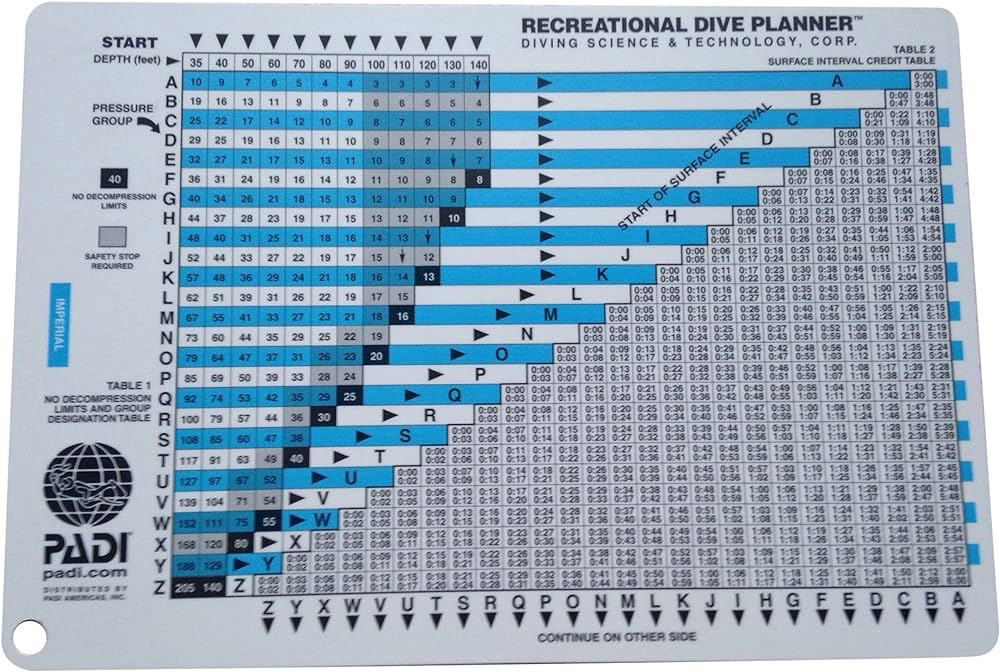
With that caveat, you use a dive watch to measure bottom time — the amount of time you can stay underwater correlated with the depth of your dive. Once you’ve calculated your bottom time (with the charts mentioned above), you adjust the uni-directional bezel, pointing the bezel arrow or zero at the minute hand. Then, simply read the elapsed time on the bezel.
As for the finer hash marks over the first 15 minutes of some bezels, those allow for single-minute measurements during decompression stops. These “safety stops” allow nitrogen to leave the body when ascending from deeper dives. Without proper safety stops, divers can get the bends, a potentially fatal affliction caused by nitrogen bubbles forming in the blood.
So yes, your dive bezel can keep you safe while diving. However, most divers these days will never use it that way, as dive computers are much more accurate and easy to use. The dive bezel makes a great timer and is excellent for cooking or other needs.
Price & Value
It’s true: dive watches can cost a pretty penny, which means you ought to have a good understanding of what you’re trading for those bills.
Budget
Spending between $50 and $400 can still net you a solid dive watch — but know that you’ll be leaving a bit on the table. Dive watches aren’t complex creatures, and in budget versions, you’ll most often see mineral glass used in the crystals, as well as lesser-quality non-hacking movements that aren’t as crisp. Brands like Casio, Vaer, Citizen, and Orient run the scene here, and there are a number of options we find well worth the minimal spend.
The $50 Casio MDV106-1A “Duro” reigns when it comes to relative value and sports an outsized 200 m water resistance, screw-down crown, and even a date window. The $279 Vaer D4 Meridian Solar adds solar to the mix, as does the Citizen Promaster ($375) — a dupe of the Seiko SKX007 that makes the grade.
Mid-Tier
Springing for a slightly nicer watch certainly gets you into the higher-end timepieces. These are where you’ll see sapphire crystal watch faces, certified Swiss watch movements, stainless steel or titanium case builds, and legitimate dive ratings backed up by screw-down bezels. These watches will run you anywhere between $500 and $1,500+.
The Squale 500M Automatic ($1,095) sports a Swiss pedigree along with a wild 500 m water resistance and sapphire crystal that elevates the luxe factor. The Victorinox Dive Pro Automatic ($1,200) tucks away a Sellita SW220-1 movement inside of a titanium build that keeps this watch light on your wrist, making it an outdoor favorite of ours.
Premium
This is the realm of your Rolex and Omega watches, which are closer to fine jewelry than utilitarian timepieces. You’re undeniably trading dollar bills for name brands and premium execution. The priciest watch we recommend isn’t any of these, however, as we think the Formex Reef Chronometer ($1,960) does all they do for half the price. The COSC-certified Sellita SW300-1 movement is every bit as functional, and the micro-extension system on the watch band means no compromises on fit.
This isn’t to say that luxury watches aren’t great. We’ve tested and adored the Zodiac Super Sea Wolf. But its $2,200 price tag barely scratches the surface of the premium dive watch realm, which climbs into the tens of thousands of dollars almost immediately. In this price range, watches should have in-house movements with long power reserves. Sapphire faces and exceptional lume are the norm. And the fit and finish must be impeccable.
This is the world of horological perfection and a step beyond what most real-world divers would consider for a jaunt below the waves.
Frequently Asked Questions
Unlike many questions in the watch hobby, there actually seems to be a clear-cut answer here. In order to be considered a true “dive watch,” the timepiece in question needs to come with the following things: passive illumination (or lume), a diver’s bezel, and at least 200 m worth of water resistance.
Lume is a common feature on a multitude of watches. We call it passive because rather than having to press a button to light up the dial, the hands and indices will give off whatever light they’ve absorbed from your surroundings. So, any time you look at it in darkness, there should be at least some measure of glow. Whether you’re underwater or just have your hands full in general, this added legibility is a vital touch.
Then there’s the bezel. We’ve talked about what they’re for above, but timing your remaining oxygen isn’t the only thing they’re good for. You can actually use it to do math or just set a reminder for when your pizza should come out of the oven.
The water resistance is pretty self-explanatory. If you’re going to be diving, you need something that won’t swamp or short out the moment you break the surface. Still, watches with as little as 50 m are often considered OK for swimming.
But with 200 m to play with, you can rest assured that there won’t be a problem. And because seals do degrade over time, the additional rating means your timepiece will stay waterproof for much longer than something with a lower rating.
There’s no correct answer to this question. So instead, try framing it this way — which movement is best for you? Are you looking for a reliable, accurate watch that needs only the occasional battery change? Go with something in standard quartz.
Its combination of value and functionality rocked the world back in the 70s and 80s, so much so that the “Quartz Crisis” knocked a fleet of mechanicals from the market.
But what if you’re after something futuristic, maybe with even less need for maintenance? Look to solar. These are quartz movements fitted with a tiny cell that draws its power from the sun.
Many of these feature power reserves of 4 months or more, requiring only the occasional stroll through the outdoors to keep their capacitors at full strength. While these are often a bit more expensive than battery-powered models, your choice of renewable energy can pay dividends from both an environmental and quality-of-life standpoint.
Lastly, there are the mechanicals. This is the least reliable and most inaccurate option — and conversely, the most expensive. But it’s also the gold standard for most of the high-end watch enthusiasts out there. Why is that? It’s the cool factor.
Whether it’s the appreciation of the craftsmanship or the respect for history, the idea of wearing a bevy of tiny, spinning gears on your wrist has a bit of romance. Automatic movements also wind their springs with the movement of your body, removing the need for batteries.
For us, the best dive watch lies at the intersection of maximum quality for minimum cost. This is why pieces like the Casio Duro, Citizen Promaster, and Island Watch’s Islander are so compelling. But the story could be different for you.
Are you looking for something tough and functional without spending more than you would on a pair of nice shoes? Grab one of our budget-minded picks. Looking for something a little more luxurious? We have several options on the higher end that should be able to scratch the jewelry itch.

The Best Field Watches of 2025
Field watches can get dirty, be thrown around, and adventure outside with you. And you don’t have to charge them! This list highlights affordable field watches from multiple top brands.

The Best Fitness Watches of 2025
We tested the best fitness watches of 2025 with options for every budget. Our top picks include Garmin, COROS, and more!
